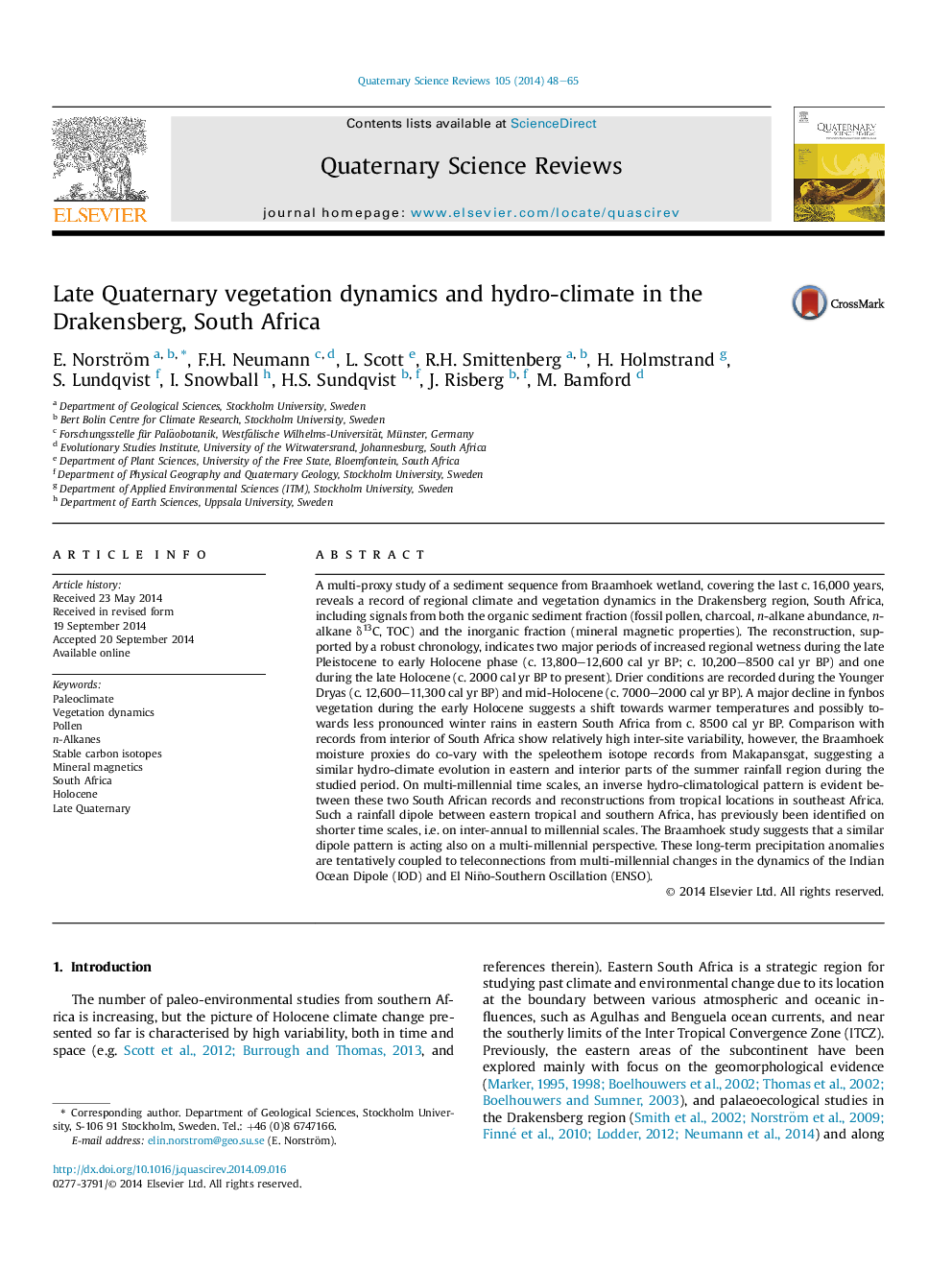| کد مقاله | کد نشریه | سال انتشار | مقاله انگلیسی | نسخه تمام متن |
|---|---|---|---|---|
| 6446108 | 1640829 | 2014 | 18 صفحه PDF | دانلود رایگان |
عنوان انگلیسی مقاله ISI
Late Quaternary vegetation dynamics and hydro-climate in the Drakensberg, South Africa
دانلود مقاله + سفارش ترجمه
دانلود مقاله ISI انگلیسی
رایگان برای ایرانیان
کلمات کلیدی
موضوعات مرتبط
مهندسی و علوم پایه
علوم زمین و سیارات
زمین شناسی
پیش نمایش صفحه اول مقاله

چکیده انگلیسی
A multi-proxy study of a sediment sequence from Braamhoek wetland, covering the last c. 16,000 years, reveals a record of regional climate and vegetation dynamics in the Drakensberg region, South Africa, including signals from both the organic sediment fraction (fossil pollen, charcoal, n-alkane abundance, n-alkane δ13C, TOC) and the inorganic fraction (mineral magnetic properties). The reconstruction, supported by a robust chronology, indicates two major periods of increased regional wetness during the late Pleistocene to early Holocene phase (c. 13,800-12,600 cal yr BP; c. 10,200-8500 cal yr BP) and one during the late Holocene (c. 2000 cal yr BP to present). Drier conditions are recorded during the Younger Dryas (c. 12,600-11,300 cal yr BP) and mid-Holocene (c. 7000-2000 cal yr BP). A major decline in fynbos vegetation during the early Holocene suggests a shift towards warmer temperatures and possibly towards less pronounced winter rains in eastern South Africa from c. 8500 cal yr BP. Comparison with records from interior of South Africa show relatively high inter-site variability, however, the Braamhoek moisture proxies do co-vary with the speleothem isotope records from Makapansgat, suggesting a similar hydro-climate evolution in eastern and interior parts of the summer rainfall region during the studied period. On multi-millennial time scales, an inverse hydro-climatological pattern is evident between these two South African records and reconstructions from tropical locations in southeast Africa. Such a rainfall dipole between eastern tropical and southern Africa, has previously been identified on shorter time scales, i.e. on inter-annual to millennial scales. The Braamhoek study suggests that a similar dipole pattern is acting also on a multi-millennial perspective. These long-term precipitation anomalies are tentatively coupled to teleconnections from multi-millennial changes in the dynamics of the Indian Ocean Dipole (IOD) and El Niño-Southern Oscillation (ENSO).
ناشر
Database: Elsevier - ScienceDirect (ساینس دایرکت)
Journal: Quaternary Science Reviews - Volume 105, 1 December 2014, Pages 48-65
Journal: Quaternary Science Reviews - Volume 105, 1 December 2014, Pages 48-65
نویسندگان
E. Norström, F.H. Neumann, L. Scott, R.H. Smittenberg, H. Holmstrand, S. Lundqvist, I. Snowball, H.S. Sundqvist, J. Risberg, M. Bamford,